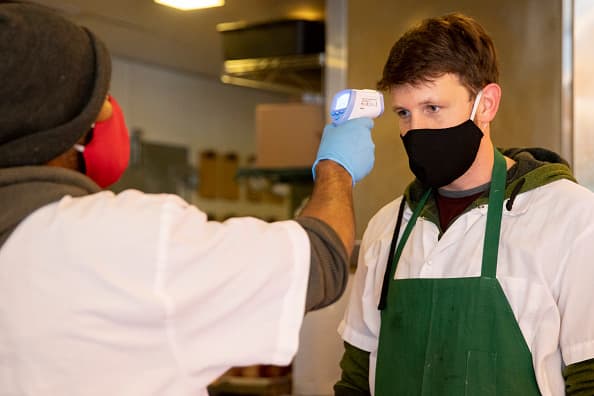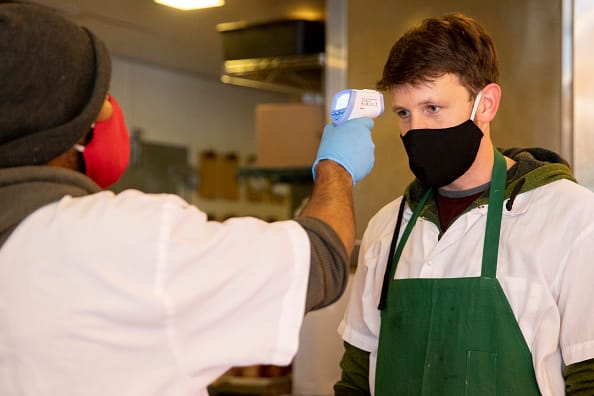
Managers at the massive Bell facilities in North Texas had a problem. As 5,000 employees building helicopters needed to stay on the job, the company — a division of Textron — had to take steps to keep workers safe.
One step included plans to take employee temperatures as they came to work. The company set out to hire 60 nurses.
“I kind of laughed,” said Wayne Lynch, managing partner at Vaco’s Dallas office. Vaco is a large consulting, recruiting and staffing firm that works with Bell. “My wife is a nurse, and on any given day, she can pick from 200 different jobs.”
Bell had already tried to staff the new temperature-taking jobs with a medical company, but it soon became clear that nurses were needed on the front lines of the COVID crisis. Vaco was already working with Bell on another project when Lynch was asked if he could help staff the new positions.
What both companies soon realized is that it doesn’t take a nurse to take a temperature. What is needed is a little training and workers with good people skills.
Bell is not alone. Companies across the country — including Apple — are screening employees for fever as they return to work, something that has been recommended by the Centers for Disease Control.
The CDC says companies should “consider conducting daily in-person or virtual health checks (e.g., symptom and/or temperature screening) of employees before they enter the facility, in accordance with state and local public health authorities and, if available, your occupational health services.”
At the same time, a report in the New York Times suggests technology designed to check temperatures may not always be accurate. Hence the need to hire people to do it.
Finding good temperature takers is a matter of finding workers with good “customer facing” skills. Waiters, bartenders, and others in the hospitality industry, many of whom lost their jobs during the shutdowns, have these skills.
“People from the hospitality industry, from the restaurant industry, are used to working all kinds of different shifts,” says Lynch. “We’ll actually be able to pay them to make this a viable job for them.”
So Vaco began recruiting, interviewing (online) and doing background checks on potential new hires. Bell realized that instead of 60 temperature-taking temps, it would need closer to 100, plus about a dozen supervisors. “There was going to be five different plants, 17 different entrance points, three shifts a day,” said Lynch.
The hiring was completed in less than 48 hours.
“We had all 100 people show up the first day for training,” he said.
They were trained in new protocols that require that any employee with a temperature of at least 100.4 to sit for 10 minutes and then have their temperatures retaken. Those who test again for a fever are given information and directed to go home, where they should contact their primary physician.
“The majority of our (new) employees come from industries such as hospitality, customer service, education, and social services,” Bell said in a statement. “Many of our shift supervisors are currently pursuing MBAs, which gives them an excellent opportunity to gain experience managing a workforce and project operation.”
The new employees are given fresh protective gear each shift, which has not been not easy to come by. In addition, Lynch says the pay could be as much as $50,000 a year on an annualized business. That’s assuming these temporary jobs become permanent. Many companies are adding these types of positions to the workplace, including Apple.
Lynch said the fear of coming into contact with an infected worker was not a major problem during recruitment.
“I can’t say that there was no one who didn’t express that, but those people just didn’t take the job.”
ngalanggan CNBC PRO pikeun wawasan sareng analisa ekslusif, sareng program bisnis bisnis langsung ti sakumna dunya.


 Signal2forex.com - robot Best Forex jeung sinyal
Signal2forex.com - robot Best Forex jeung sinyal




